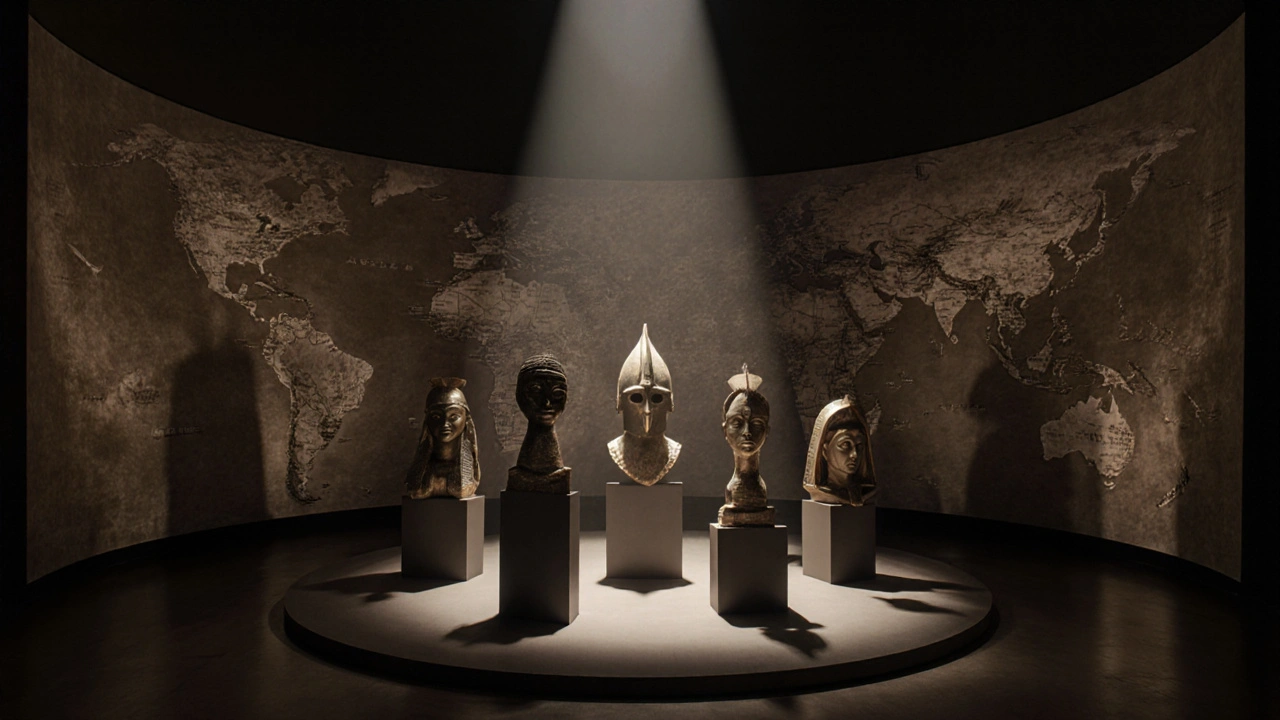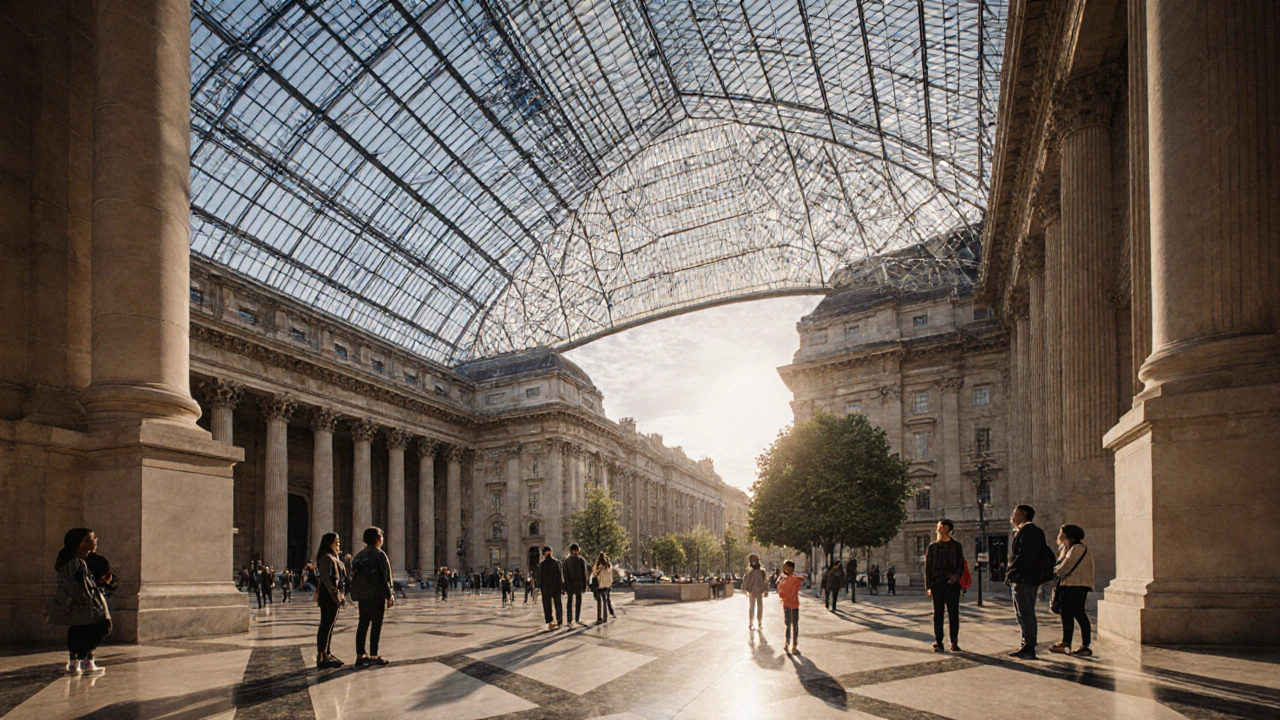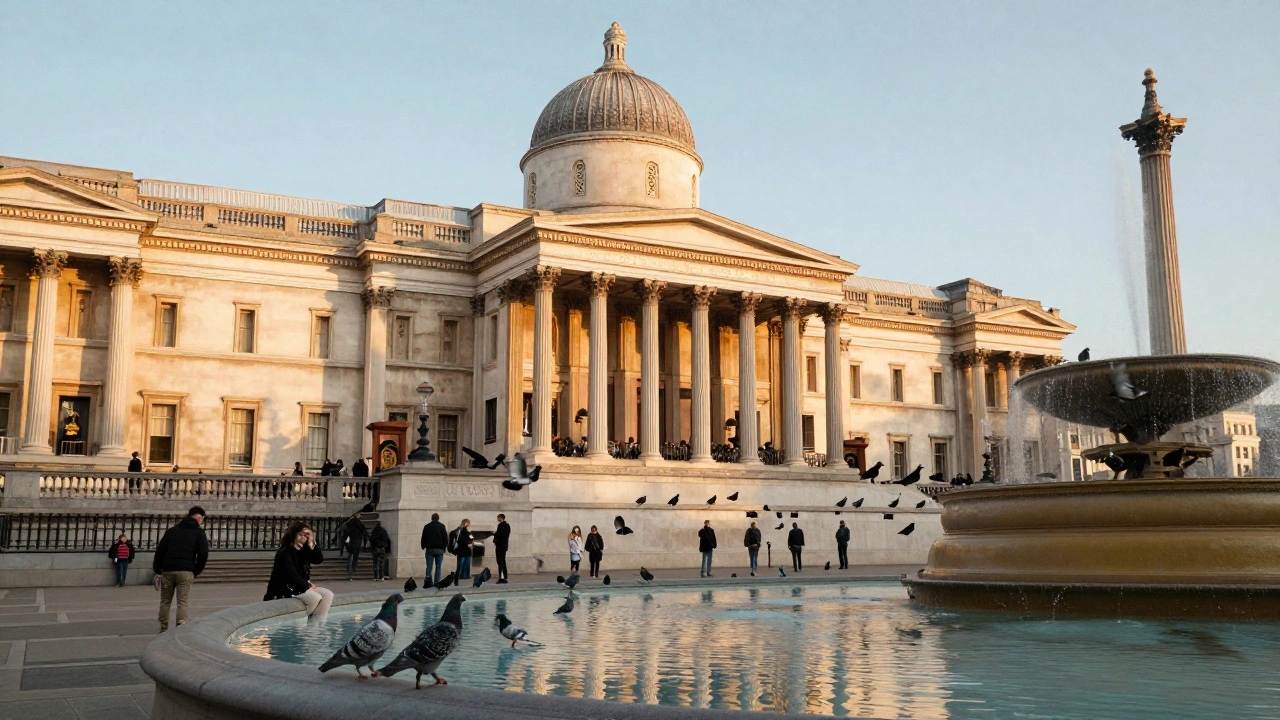The British Museum: London’s Greatest Archive of Human History

In London, where the Thames winds past centuries of stone and steel, few places hold as much quiet power as the British Museum. It’s not just another attraction on the tourist map-it’s the city’s living archive, where the bones of empires, the whispers of lost languages, and the tools of daily life from every corner of the globe sit side by side, waiting to be seen. And best of all? You don’t need to pay a penny to walk through its grand halls. For Londoners, it’s not just a museum-it’s a second home, a place to escape the rush of Oxford Street, to think deeper than the headlines, and to remember that the world is bigger than the Tube map.
More Than a Building: A Library of Human Experience
The British Museum isn’t built to impress with flashy lights or interactive screens. It’s built to endure. Opened in 1759, it’s one of the oldest public museums in the world, founded on the collection of Sir Hans Sloane, a physician who amassed over 71,000 objects-from coins to curiosities-before leaving them to the nation. Today, that collection has grown to over 13 million items, displayed across 94 galleries. You won’t find a single ticket gate blocking your path. Just walk in through the grand portico, past the lions that guard the entrance, and step into a space where time folds in on itself.
Walk down the Great Court, under the glass roof designed by Norman Foster, and you’ll feel the weight of history without the noise. Students from UCL hunch over sketchpads near the Rosetta Stone. Tourists from Tokyo take selfies with the Elgin Marbles. A retired teacher from Croydon reads aloud from a tablet about the Lewis Chessmen, found in a Scottish island in 1831. This isn’t a place for passive viewing-it’s a place for connection.
The Rosetta Stone: Why It Still Matters
If you’ve ever studied history in school, you’ve heard of the Rosetta Stone. But standing in front of it in Room 4, you realize it’s not just a slab of black basalt. It’s the key that unlocked ancient Egypt. Before 1822, no one could read hieroglyphs. Then Jean-François Champollion, using the Greek, Demotic, and hieroglyphic texts on this single stone, cracked the code. Suddenly, 3,000 years of silence spoke.
It’s not the most beautiful artifact here. But it’s the most important. And it’s here, in London, because of colonial history-not because it was stolen, but because it was taken. That tension lingers. Locals debate it over pints at The George in Bloomsbury. Students write essays on it at the British Library, just a five-minute walk away. It’s a reminder that museums aren’t neutral spaces. They’re battlegrounds of memory.
Elgin Marbles: The Debate That Won’t Go Away
Walk into Room 18, and you’re face to face with the Parthenon sculptures. These marble figures-draped in movement, carved over 2,500 years ago-once crowned the temple of Athena in Athens. Lord Elgin took them in the early 1800s, claiming permission from the Ottoman rulers of Greece. Greece has asked for their return for decades. The British Museum says they’re safer here, preserved under climate control, accessible to millions.
But ask a Londoner who’s visited the Acropolis Museum in Athens-where the missing pieces sit in empty spaces, waiting-and they’ll tell you something different. The debate isn’t just political. It’s emotional. It’s about belonging. In London, where so many come from elsewhere, the question echoes: Who owns the past?

From Mesopotamia to the Pacific: A World in One Building
One floor up, in Room 56, you’ll find the Standard of Ur-a 4,500-year-old inlaid box from ancient Iraq. It shows war and peace in tiny mosaic scenes, made from lapis lazuli and shell. In Room 24, the Sutton Hoo helmet, buried with an Anglo-Saxon king in Suffolk, gleams like a myth come true. In Room 25, the Benin Bronzes, looted from Nigeria in 1897, stare back with quiet dignity.
These aren’t just objects. They’re stories. The helmet tells of a king who ruled East Anglia before London was a city. The bronzes speak of a kingdom that had metalworkers more skilled than any in Europe at the time. The Standard of Ur shows a society that traded across the Persian Gulf. In London, where you can hear 300 languages on the Northern Line, the British Museum reflects that same diversity-not as a collection of curiosities, but as a record of human ingenuity.
How to Make the Most of Your Visit
If you’re a Londoner, you know the trick: go on a weekday morning. The crowds thin out after 10 a.m., and the light through the Great Court is at its best. Bring a notebook. Or just sit on one of the wooden benches near the Assyrian reliefs and watch how people react. A child points at a mummy and asks, “Is he sleeping?” A tourist from Brazil takes a photo of a Chinese jade dragon and says, “My grandma had one like this.”
Don’t try to see it all. Pick one gallery. Spend an hour. Read the plaque. Look at the object. Then look again. The museum doesn’t rush you. It never has. Even during the pandemic, when the doors were closed, the staff kept cataloging, digitizing, and preserving. That’s the quiet heartbeat of this place.
And if you’re hungry? The museum café, tucked behind the Egyptian statues, serves proper British tea with scones-no fancy matcha lattes, just Earl Grey and clotted cream. Walk out the back entrance, past the bust of Dr. Johnson, and you’re on Bloomsbury Square, where the trees turn gold in October and the pensioners play chess under the lamplight.

Why It’s More Than a Tourist Spot
London has the Tate Modern, the V&A, the Natural History Museum-each brilliant in its own way. But the British Museum is different. It doesn’t celebrate British art. It doesn’t glorify nature. It holds the world’s past, and lets you touch it.
For expats, it’s a bridge to home. A Nigerian student finds a Yoruba mask and calls her mother. A Ukrainian refugee reads about ancient Mesopotamian tablets and remembers her grandmother’s stories. For locals, it’s a quiet rebellion against the noise of the city. A place where you can stand still, even when the world rushes past.
It’s also where London’s intellectuals gather. The British Museum Press publishes scholarly books on cuneiform and Roman coins. The Department of Africa, Oceania, and the Americas hosts talks on decolonization. The museum’s library, once open only to researchers, now lets anyone with a reader’s pass sit among its 15 million books and manuscripts.
This isn’t a museum that tells you what to think. It asks you to wonder. Why did they make this? Who held it? What did they believe? And what does it mean that we have it now?
What’s Next for the British Museum?
Plans are underway to rehouse the collection more ethically, to share artifacts with partner institutions in Ghana, Nigeria, and Greece-not as loans, but as co-ownership. New galleries are being designed to tell the full story of colonialism, not just the triumphs. And in 2026, a new digital archive will let anyone, anywhere, explore 500,000 high-res images of objects that have never been on display.
But the soul of the museum remains unchanged. It’s still free. Still open every day except December 24-26. Still quiet enough to hear your own thoughts.
So next time you’re in London-whether you’ve lived here 30 years or just arrived on the Eurostar-skip the queue at the London Eye. Skip the overpriced coffee in Covent Garden. Walk to Bloomsbury. Step inside. And let the stones, the clay, the metal, and the ink speak.
You don’t need to be a scholar to listen.
Is the British Museum really free to enter?
Yes, entry to the permanent collection is completely free for everyone. You can walk in anytime during opening hours without a ticket. Some special exhibitions charge a fee, but over 90% of the museum’s galleries are always free. This policy has been in place since 1759 and remains one of the most important aspects of the museum’s identity in London.
How long should I spend at the British Museum?
You could spend days here, but most visitors find three to four hours enough to see the highlights without feeling overwhelmed. If you’re short on time, focus on the Rosetta Stone, the Elgin Marbles, the Egyptian mummies, and the Sutton Hoo treasures-these are the must-sees. For a deeper experience, pick one gallery and spend an hour with just one object. The museum rewards patience, not speed.
What’s the best time to visit to avoid crowds?
Weekday mornings-especially Tuesday to Thursday before 10 a.m.-are the quietest. Weekends and school holidays get packed, especially around the Rosetta Stone and mummy galleries. If you’re a London resident, try visiting after work on a Thursday evening. The museum stays open until 8:30 p.m. on the first Friday of each month, and the lighting in the Great Court is stunning at dusk.
Can I bring food or drinks inside?
You can’t bring food into the galleries, but you’re welcome to have a snack or drink in the Great Court café or the museum’s outdoor seating areas. The café serves proper British tea, sandwiches, and pastries. Many locals bring a thermos of tea and sit on the benches near the Assyrian reliefs-quietly enjoying the peace before heading back to the office or the Tube.
Is the British Museum suitable for children?
Absolutely. The museum has a dedicated family trail with hands-on activities, and free family guides are available at the information desk. Kids love the mummies, the giant dinosaur skeleton in the entrance hall, and the chance to touch replica artifacts in the Discovery Room. There’s also a free family-friendly app with games and stories that turn each gallery into a treasure hunt.
For Londoners, the British Museum isn’t a place you visit once. It’s a place you return to-through every season, through every change in your life. It’s where history doesn’t feel distant. It feels close. Real. Alive.



George Merkle
November 6, 2025 AT 15:18The British Museum is one of those rare places where you can stand in front of a 3,000-year-old artifact and feel like you're having a conversation with someone who lived before cities had streetlights. It doesn't shout. It doesn't need to. Just walking through those halls reminds you that humanity has always been curious, always been creative, always been flawed. And that's the point.
Edith Mcdouglas
November 7, 2025 AT 14:16Let’s be clear-the Rosetta Stone isn’t ‘in London because it was taken’; it was acquired through legal channels under the Ottoman Empire’s authority at the time. The modern moralizing about ‘colonial theft’ is performative nonsense. If every artifact were returned to its ‘origin,’ museums would be empty and history would be reduced to nationalist propaganda. The British Museum preserves context, not just objects.
Ryan Frioni
November 7, 2025 AT 19:07Edith, you’re missing the point entirely. It’s not about legality-it’s about justice. The Parthenon Marbles weren’t ‘acquired’-they were looted by a British lord who exploited a crumbling empire. The Greeks have a museum designed specifically to reunite them. The British Museum refuses because admitting guilt would mean admitting that empire was built on theft. And that’s the real exhibit here: the arrogance of preservation.
Amar Ibisevic
November 7, 2025 AT 21:29I visited last year and spent two hours just staring at the Standard of Ur. The detail in those inlays-shell, lapis, red limestone-it’s insane. I kept thinking, how did they even get the lapis from Afghanistan to Ur 4,500 years ago? Trade routes back then were wild. And now we argue over who owns it. Meanwhile, the thing’s still here, still telling its story. That’s what matters.
Gabby Eniola
November 8, 2025 AT 16:18That quiet moment near the Assyrian reliefs with your tea? That’s the real magic. No one rushes you. No one shushes you. Just history, silence, and the smell of old paper and stone.
Tony Stutz
November 9, 2025 AT 00:11They say it’s free but you know what they don’t tell you? The museum’s funded by the same global elites who run the banks and the media. Every artifact you see? It’s a distraction. A shiny object to keep you from asking why your rent’s $3,000 while a 2,000-year-old helmet sits behind glass. The real treasure isn’t in the galleries-it’s in the vaults where they keep the real power. And no, I’m not joking. The Rosetta Stone? It was never meant to be understood. It was meant to be controlled.
Madi Vachon
November 10, 2025 AT 11:13Look, I get it-some people think museums are cultural therapy. But let’s not confuse sentimentality with sovereignty. The British Museum is a crown jewel of Western civilization’s intellectual legacy. We preserved these artifacts when their countries couldn’t. Greece? They’ve had decades to fix their own climate-controlled facilities. Nigeria? They’ve got oil money but can’t even keep a single bronze from being stolen by locals. We’re the guardians. Don’t confuse guilt with gratitude.
Sunny Kumar
November 11, 2025 AT 07:20THEY SAID IT WAS FREE... BUT DID YOU KNOW THE MUSEUM’S OWNERSHIP IS ACTUALLY CONTROLLED BY A SECRET SOCIETY THAT TRACES BACK TO THE KNIGHTS TEMPLAR??? THE ROSETTA STONE? IT’S NOT A KEY TO HIEROGLYPHS-IT’S A MAP TO A LOST TEMPLE UNDER LONDON!!! THEY’RE HIDING THE TRUTH IN PLAIN SIGHT!!! AND THE LIONS AT THE ENTRANCE? THEY’RE WATCHING YOU!!!
Chase Chang
November 12, 2025 AT 11:01George, you’re right-it’s not just a museum. It’s a cathedral. And the Rosetta Stone? That’s the altar. The Elgin Marbles? The stained glass. The Benin Bronzes? The choir singing in silence. We don’t own them. We’re just the caretakers. And if we ever stop listening, if we ever decide they’re just ‘artifacts’ instead of voices-then we’ve already lost. The museum doesn’t need more exhibits. It needs more humility.